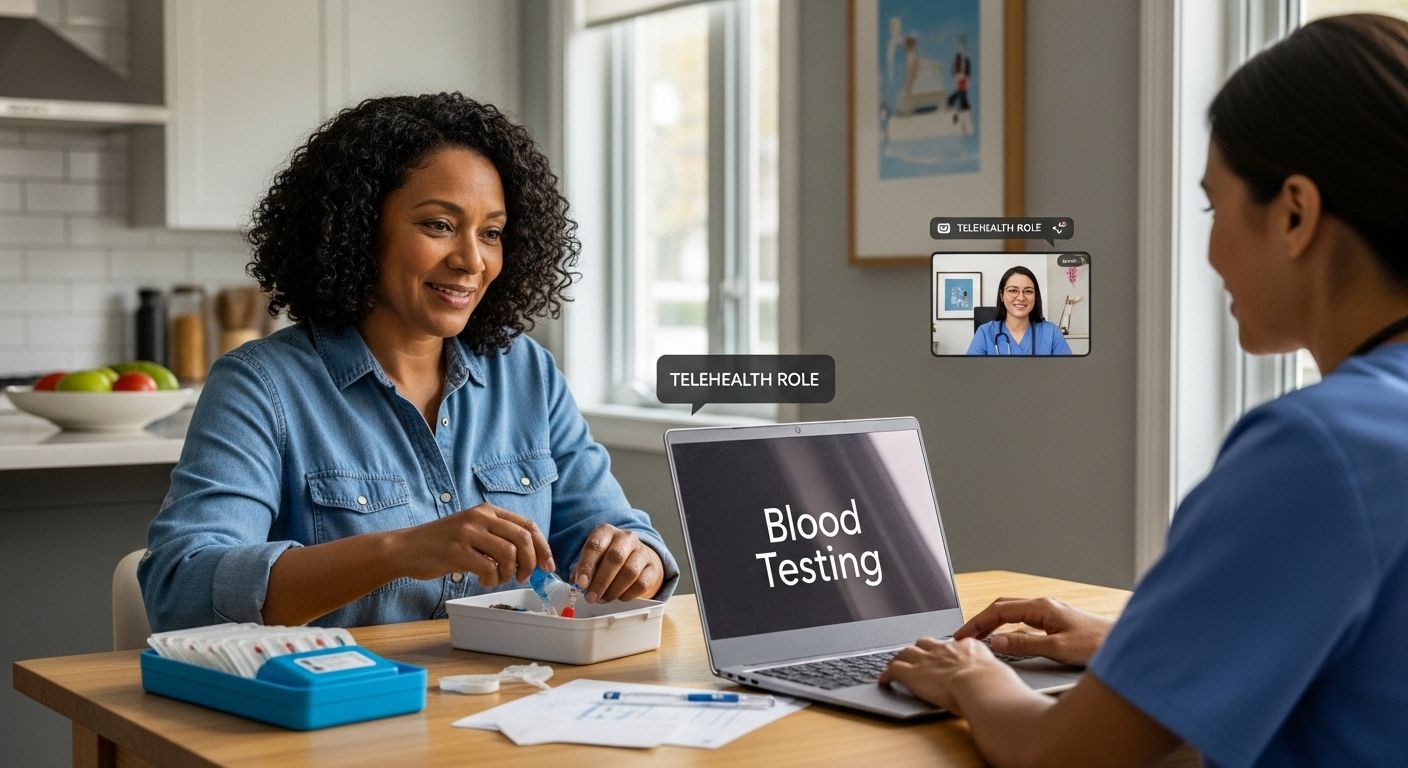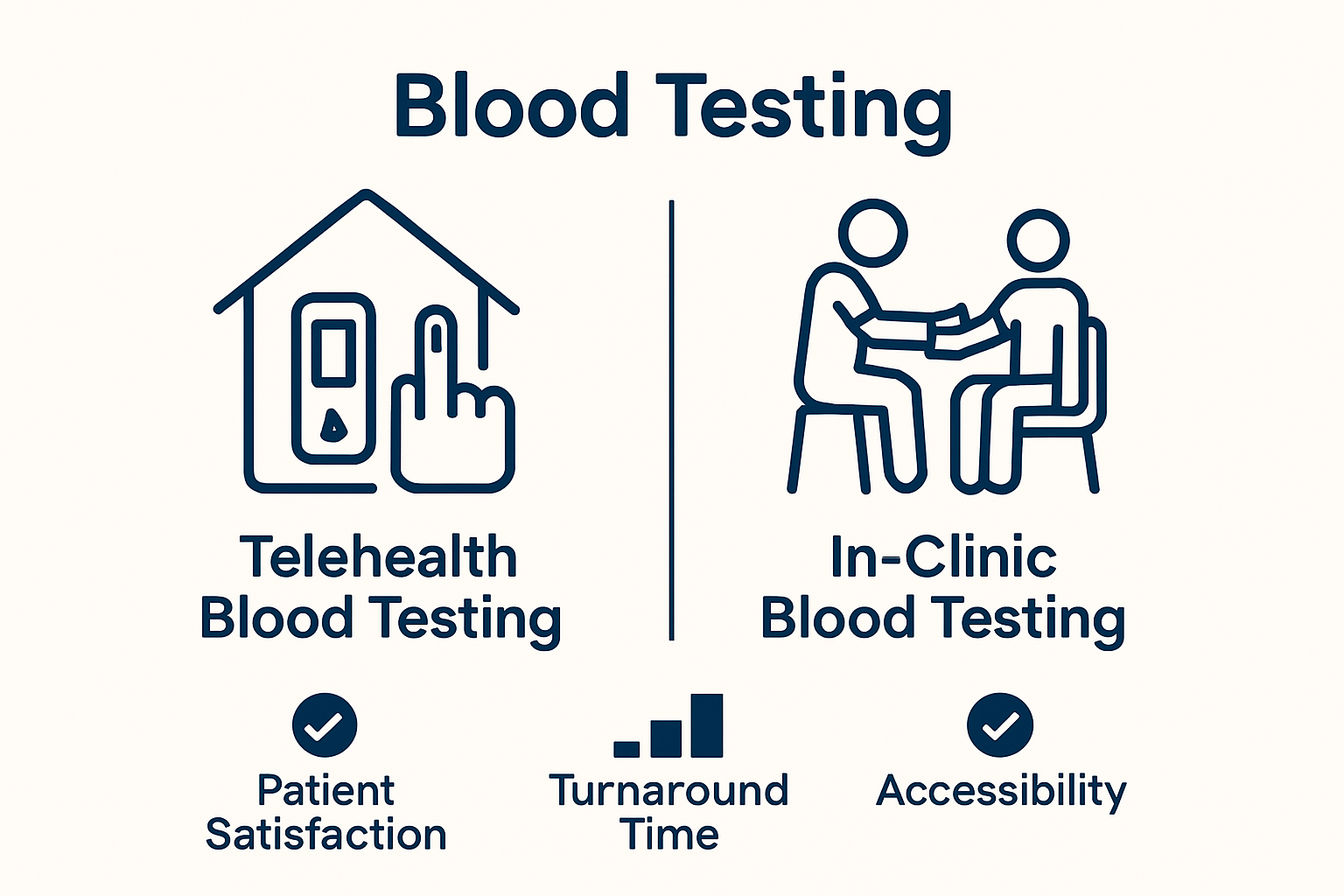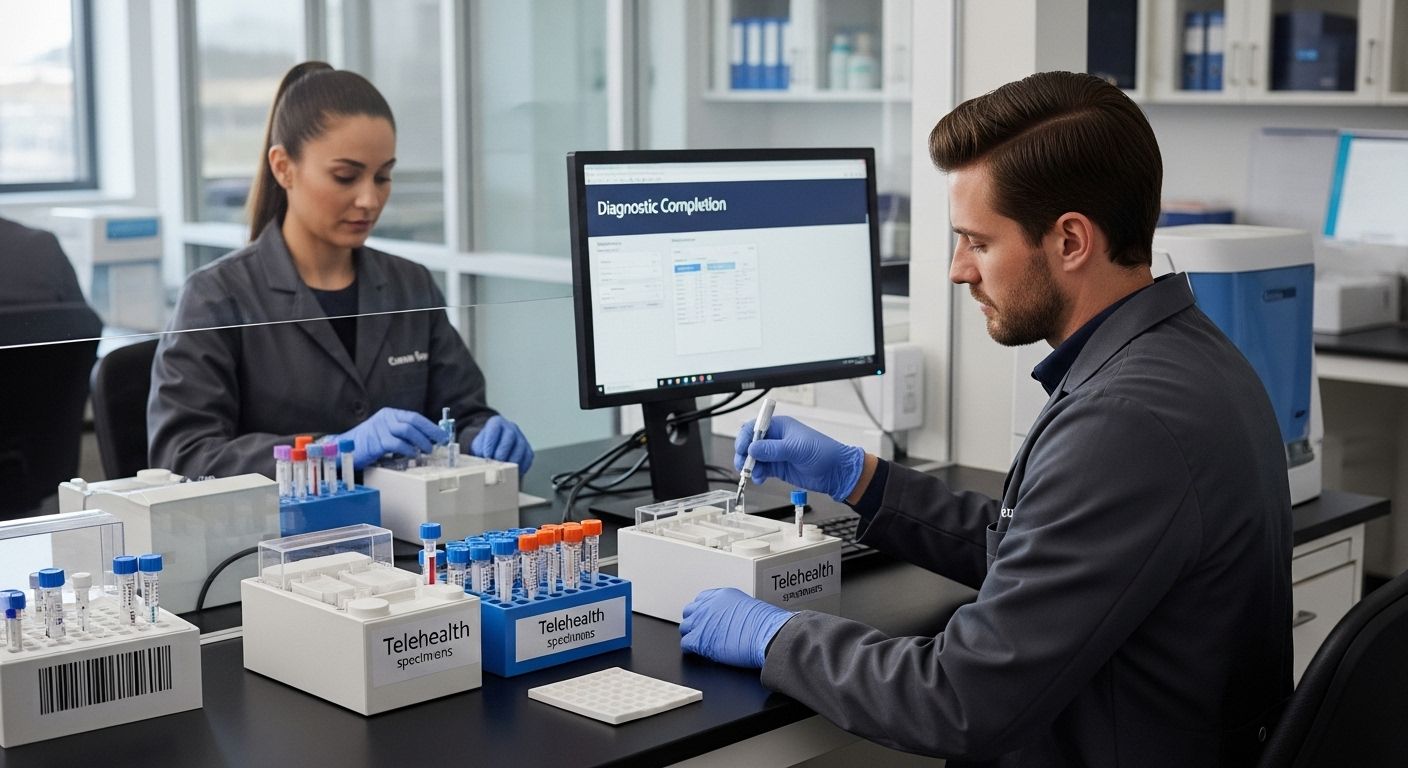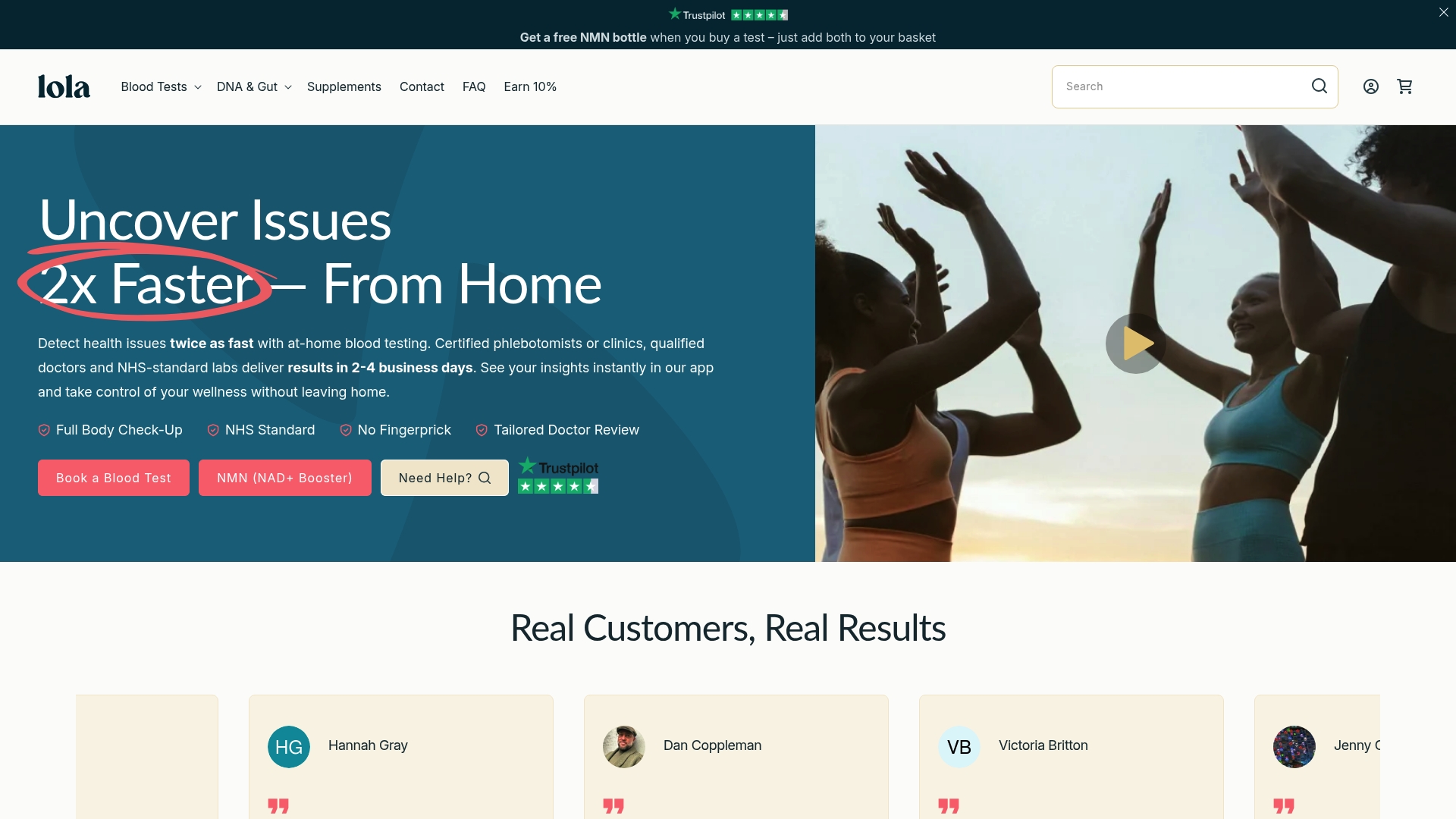
Blood testing is moving into the digital age. Now patients can collect blood samples at home and send them off without ever setting foot in a clinic. But here’s the surprise. Over 93% of these homecollected samples meet clinical quality standards and nearly all get returned to labs on time. This shakes up everything people assume about diagnostics and remote care.
Table of Contents
- What Is Blood Testing In The Context Of Telehealth?
- Why Is Blood Testing Important For Remote Patient Care?
- How Does Blood Testing Integrate With Telehealth Services?
- Key Concepts Behind Blood Testing And Telehealth Interactions
- Real-World Applications And Future Trends In Telehealth Blood Testing
Quick Summary
| Takeaway | Explanation |
|---|---|
| Telehealth enhances blood testing accessibility | Patients can receive testing without clinical visits, making healthcare more convenient and widely available. |
| Self-collection is increasingly viable | At-home blood specimen collection is accepted by patients, facilitating remote diagnostics. |
| Blood testing aids chronic disease management | Regular blood tests improve monitoring and treatment adjustments for chronic conditions, reducing hospital visits. |
| Digital infrastructure streamlines diagnostics | Secure online systems enable test ordering, result management, and patient data coordination efficiently. |
| Emerging technologies enhance diagnostic precision | Innovations like AI are improving the accuracy and user-friendliness of blood testing, shifting towards more personalised healthcare. |
What is Blood Testing in the Context of Telehealth?
Blood testing within telehealth represents a transformative approach to remote healthcare diagnostics, enabling patients to receive comprehensive medical insights without traditional in-person clinical visits. By integrating advanced digital technologies with sophisticated laboratory analysis, telehealth blood testing bridges geographical barriers and provides accessible health monitoring.
Digital Infrastructure for Remote Blood Testing
Telehealth blood testing utilises electronic health record (EHR) systems and secure digital platforms to streamline the entire diagnostic process. The Office of the National Coordinator for Health Information Technology explains that these digital systems allow clinicians to electronically order laboratory tests, receive results, and manage patient data with enhanced coordination and reduced risk of duplicate testing.
Key components of this digital infrastructure include:
- Secure online patient portals for test ordering
- Electronic transmission of test requisitions to laboratories
- Automated result tracking and notification systems
- Virtual consultation platforms for result interpretation
Self-Collection and Laboratory Processing
Modern telehealth blood testing has evolved to include innovative self-collection methodologies. Research demonstrates that patients can now collect blood specimens at home using specialised kits, which are then processed in centralised laboratories. A peer-reviewed study on telehealth specimen collection highlighted that approximately 46% of participants were comfortable with home-based blood sample collection, indicatin

g growing acceptance of remote diagnostic strategies.
This approach offers significant advantages, including:
- Increased patient convenience
- Reduced exposure to clinical environments
- Broader geographical access to diagnostic services
- Minimised travel requirements for medical testing
Blood testing in telehealth represents more than a technological convenience—it is a patient-centric approach to healthcare that empowers individuals to proactively manage their health through accessible, efficient diagnostic services.
Why is Blood Testing Important for Remote Patient Care?
Blood testing in remote patient care serves as a critical diagnostic tool that enables healthcare providers to monitor patient health, detect potential medical conditions, and make informed treatment decisions without requiring physical clinical visits. This approach has become increasingly vital in modern healthcare delivery, particularly as digital health technologies continue to evolve.
Diagnostic Precision and Continuous Monitoring
Remote blood testing provides healthcare professionals with comprehensive insights into a patient’s physiological status. A cohort study examining telehealth diagnostic completion rates revealed significant challenges in test follow-through, highlighting the importance of robust remote diagnostic strategies.
Key aspects of diagnostic precision include:
- Early detection of potential health risks
- Tracking chronic condition progression
- Monitoring treatment effectiveness
- Identifying subtle physiological changes
Chronic Disease Management
For patients managing chronic conditions, regular blood testing becomes an essential component of remote healthcare. The American Diabetes Association Standards of Care emphasises the critical role of periodic blood tests, such as A1C measurements, in evaluating glycemic control and adjusting treatment protocols.
Blood testing supports chronic disease management by:
- Providing quantitative health metrics
- Enabling personalised treatment strategies
- Reducing unnecessary in-person clinical visits
- Supporting continuous patient monitoring
Through advanced diagnostic insights, telehealth blood testing transforms healthcare delivery, making proactive health management more accessible, convenient, and patient-centered.
How Does Blood Testing Integrate with Telehealth Services?
Blood testing integration with telehealth services represents a sophisticated digital healthcare ecosystem that transforms traditional diagnostic processes through technological innovation, patient convenience, and comprehensive remote medical management.
Specimen Collection Methodologies
Modern telehealth platforms have developed multiple strategies for blood specimen acquisition that eliminate geographical barriers. A multicenter study in Diabetes Technology & Therapeutics validated home fingerstick capillary blood collection kits, demonstrating that 96–99% of mailed capillary results were within acceptable clinical ranges, proving the reliability of remote specimen collection techniques.
Key specimen collection approaches include:
- Home blood collection kits with pre-paid return packaging
- Supervised remote phlebotomy sessions
- Dried blood spot sample methodologies
- Patient-directed sample preparation protocols
To clarify the different methods and key features of remote blood specimen collection discussed in the article, the table below compares various specimen collection methodologies available in telehealth blood testing.
| Specimen Collection Method | Description | Key Advantages |
|---|---|---|
| Home blood collection kits | Kits sent to patients for self-collection and postal return | High convenience, no clinic visit required |
| Supervised remote phlebotomy sessions | Virtual guidance from clinicians during at-home collection | Professional oversight, improved compliance |
| Dried blood spot sample methodologies | Collection of blood on specialised filter paper for mailing | Easy shipping, stable samples |
| Patient-directed preparation | Patients follow protocol to prepare samples for the lab | Empowers patients, flexible |
Digital Workflow and Result Management
Telehealth blood testing leverages secure digital infrastructure to streamline the entire diagnostic journey. Healthcare providers can electronically order tests, track specimen processing, and review comprehensive results through integrated platforms that ensure patient data privacy and rapid information exchange.
Critical digital workflow components encompass:
- Secure online patient portals
- Electronic test requisition systems
- Automated laboratory processing networks
- Virtual consultation interfaces for result interpretation
Through advanced diagnostic insights, telehealth blood testing creates a seamless, patient-centric approach to remote healthcare monitoring that prioritises accessibility, accuracy, and personalised medical intelligence.
Key Concepts Behind Blood Testing and Telehealth Interactions
Telehealth blood testing represents a complex intersection of medical diagnostics, digital technology, and patient-centered healthcare delivery. Understanding the foundational principles driving this innovative approach requires examining multiple interconnected technological and regulatory frameworks.
Regulatory and Quality Assurance Frameworks
The Clinical Laboratory Improvement Amendments (CLIA) establish comprehensive standards governing all clinical laboratory testing, ensuring diagnostic accuracy and reliability across telehealth platforms. These regulations mandate rigorous quality control processes that apply universally, regardless of specimen collection method or consultation modality.
Key regulatory considerations include:
- Standardised laboratory certification requirements
- Comprehensive quality management protocols
- Consistent performance evaluation metrics
- Strict patient result confidentiality standards
The following table organises key regulatory and quality assurance frameworks that underpin telehealth blood testing, as described in the article. This summarises essential aspects to help readers understand the standards ensuring safe and accurate diagnostics.
| Regulatory/Quality Consideration | Purpose |
|---|---|
| Laboratory certification requirements | Ensures laboratories meet clinical testing standards |
| Comprehensive quality management protocols | Maintains accuracy and reliability of test results |
| Performance evaluation metrics | Measures laboratory consistency and test validity |
| Patient result confidentiality standards | Protects patient privacy and data security |
Diagnostic Completion and Workflow Challenges
Telehealth introduces unique challenges in diagnostic workflow management. Research examining telehealth diagnostic order completion revealed significant disparities between virtual and traditional medical service delivery, with telehealth orders experiencing lower test completion rates.
Critical workflow challenges encompass:

- Reduced patient test follow-through rates
- Complex coordination between virtual consultations and laboratory services
- Enhanced need for patient engagement strategies
- Technological infrastructure requirements
Through advanced diagnostic insights, healthcare providers can navigate these complex interactions, transforming potential technological barriers into opportunities for more accessible, patient-centered medical diagnostics.
Real-World Applications and Future Trends in Telehealth Blood Testing
Telehealth blood testing continues to evolve, transforming healthcare delivery through innovative technological solutions that address patient accessibility, diagnostic precision, and personalised medical management. The intersection of digital health platforms and advanced diagnostic methodologies is reshaping how healthcare professionals monitor and interpret patient health metrics.
Current Clinical Implementation Strategies
Research examining telehealth specimen collection demonstrates remarkable feasibility in remote blood testing, with studies showing 96.2% of at-home sampling kits successfully returned and over 93% of specimens meeting clinical quality standards. These findings underscore the practical potential of telehealth blood testing across diverse medical contexts.
Key implementation strategies include:
- Clinician-supervised remote specimen collection
- Standardised home testing protocols
- Secure digital result transmission
- Comprehensive patient support systems
Emerging Technological Innovations
The telehealth blood testing landscape is witnessing significant technological advancements that promise to enhance diagnostic accuracy, patient convenience, and healthcare accessibility. Emerging trends suggest a future where blood testing becomes increasingly personalised, predictive, and patient-driven.
Promising technological developments encompass:
- Artificial intelligence-enhanced result interpretation
- Miniaturised home testing devices
- Advanced biomarker tracking technologies
- Real-time health monitoring platforms
Through advanced diagnostic insights, healthcare providers are pioneering a new era of proactive, data-driven medical care that empowers patients to take control of their health journey.
Take Charge of Your Health with Remote Blood Testing You Can Trust
You have just learned how revolutionary telehealth blood testing can be for proactive and convenient healthcare. Yet the article also highlights key challenges many face: limited access to in-person clinics, difficulty maintaining regular blood tests, and worries about diagnostic accuracy. With conditions like diabetes and heart disease needing constant monitoring, waiting for results or navigating complicated systems can increase stress and risk.
Discover how Our Blood Tests provide simple solutions that eliminate these pain points.
At Lola Health, you can order a comprehensive at-home or clinic blood test online, book a certified nurse visit, and receive doctor-reviewed results in as little as 2–4 business days. Every test is processed in UKAS-accredited, NHS-standard labs to ensure total peace of mind. Our digital portal puts your health insights at your fingertips for confident decision making.
Let science work for you—take the next step to proactive wellness today with Lola Health. Explore our complete range at lolahealth.com and unlock fast, accurate diagnostic insights for a healthier tomorrow.
Frequently Asked Questions
What is blood testing in telehealth?
Blood testing in telehealth refers to a remote healthcare diagnostic method that allows patients to perform blood tests and receive medical insights without attending in-person clinical visits, facilitated by digital technologies and laboratory analyses.
How does specimen collection for telehealth blood testing work?
Patients can collect blood specimens at home using specialised kits, which are then sent to centralised laboratories for analysis, enabling greater convenience and access to diagnostic services.
What are the benefits of remote blood testing for managing chronic diseases?
Remote blood testing provides crucial health metrics that support personalised treatment strategies, continuous monitoring, and reduce the need for unnecessary in-person visits, ultimately enhancing the management of chronic conditions.
What technological advancements are shaping the future of telehealth blood testing?
Emerging technological innovations include artificial intelligence for result interpretation, miniaturised home testing devices, and advanced biomarker tracking technologies, all contributing to more personalised and accessible healthcare delivery.


